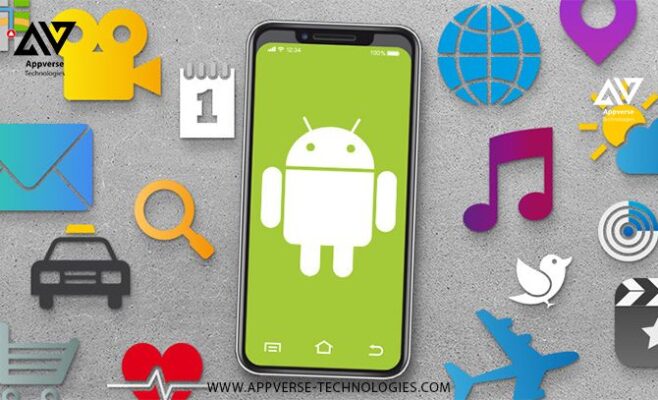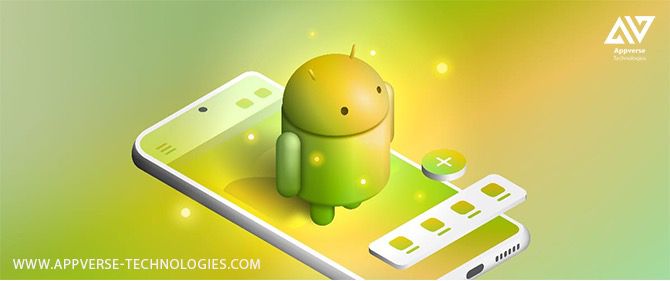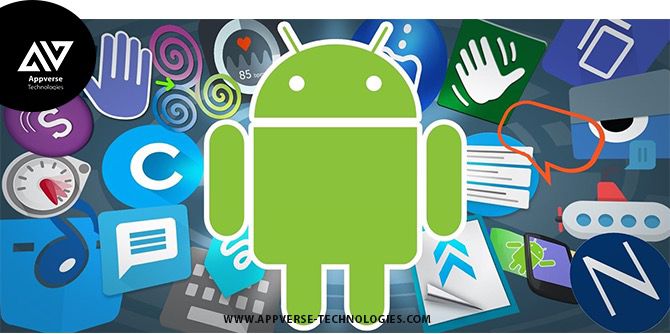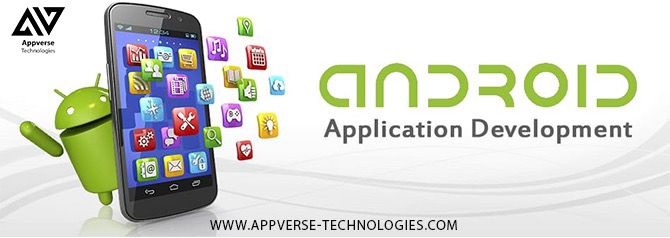
Introduction:
Android is widely used operating system developed by Google. It was basically designed for touch screens such as mobile phones and tablets. It was firstly released in 2007 on android-powered device by Google but it gained popularity in 2008. Since then, it has been used widely around the world. Its basics are derived from the Linux kernel and open-source software, designed to open and customizable. Google has employed android in different smart devices like smart watches, televisions and cars, each of them has unique user interface to make it easy to use.
History of Android:
Key milestones of android from starting to present are as follows:
Origin and Early Development:
2003:
In a city of California Palo Alto, accompany was founded with the name of Android Inc. the founders of this company were Andy Robin, Rich Miner, Nick Sears and Charis White. The main aim of this company was to develop an advanced Operating System for digital cameras but due to better opportunities for smartphones in market, their focused was shifted to smartphones.
2005:
Android Inc. continued to work on the android OS project. In 2005, Google acquired company. So, this project was undergone the leadership of the Google. Developers like Rubin remained in this project under the leadership of the Google. Google promoted the early mobile platform’s flexibility and upgradability to mobile providers and device manufacturers.
2007:
This year was of very importance in the android history. In this year, the Android OS was in developing process when the Apple released the iPhone. there were some shortcomings in the prototype of an Android phone provided to the developers were had lack of touch keypad and was much like BlackBerry. The launch of iPhone made the Android development process faster. And in the same year, the Google releases its first public beta version of Android 1.0. since then, Android has been evaluating day-by-day.

Major Releases and Milestones
Android 1.0 (2008):
First commercially available Android device was introduced by HTC Dream (T-Mobile G1). Key features in this release were Android Market (now google Store), web browser and integration with google services like Gmail, Maps and YouTube, camera support, Wi-Fi, Bluetooth, alarm clock etc. This phone had support for QWERTY keyboard. This first version met a lot of requirements with smartphones at that point of time. This version was not taken seriously except some developers.
Android 1.1:
The second version of android came into existence in February 2009. Android 1.1 was known as “Petit Four” internally but this name was not release officially. This version was not much changed with already changes in the place but its early second release made the people attracted towards it. This also made the people force to think that no other smartphone had the same characteristics. In this update, the bugs were resolved and new features were added. Ability for attachments in messages, ability to show and hide Dialpad while on call, details and reviews in the google map search were the main features of this version.
Android 1.5 Cupcake:
This was the second version introduced in 2009. Form this version, the tradition for naming with desserts was marked. This version update was based on Linux kernel 2.6.27. In this version numerous versions were introduced like keyboards, widget and video recording etc. Other features included copy-past feature in web browser, animated screen transitions, auto-rotation option, ability to upload things on different social media apps.
Android 1.6 Donut:
This version was also introduced in 2009 based on the Linux kernel 2.6.29. In this version, features like voice and text entry search, including bookmark history, easy camera access, screenshot’s ability, selection of multiple photos etc. it also supports different screen sizes and resolutions. Due to its support for different screen sizes and resolution, it became easy to use android OS on different devices.
Android 2.0/2.1 Éclair:
On October 2009, the android version 2.0 was introduced with codename Éclair. In this version certain more features were included such as major UI improvements, Google Map Navigation, live wallpapers, Microsoft exchange email support, ability to tap on contact number to select call, message or email the person and ability to search from saved messages etc. later on Android 2.1 version was introduced with some bug fixation.
Android 2.2 Froyo:
This version was released in 2010. Its name froyo is the short name of Frozen Yogurt. In this version, attention was given to the speed, memory and performance optimization. In this version, the ability to install apps form Google play to device’ SD card was added. Features for flashing the web browser and Wi-Fi hotspot were also a part of this version.
Android 2.3 Gingerbread:
This version was released in 2010. This version was proved to be good for mobile phones but for tablets this was not a good choice. Main features of this release were on-screen keyboard, user interface refinements, improved performance, support for Near Field Communication (NFC), application and power management and enhanced gaming performance. This version was quite good but still new updates were required for better performance.
Android 3.0 Honeycomb:
The lack of poor tablet support in version Android 2.3 was focused in this version. this version was released in 2011. This version had greater support for screens like tablet. The UI of this version had absolutely new look because it was meant to tablets. Features included in this version were interface optimization for larger screens, improved multitasking, added action bar, navigation, widgets and other types of contents on the main screen, multiple browser tabs etc. the first device compatible to this version was Motorola Xoom tablet was released on 24 February 2011.
Android 4.0 Ice Cream Sandwich:
Unlike the previous version, this version was compatible both for tablets and smartphones also. This was released in 2011. Features included in this version were easy multitasking, rich notifications, customizable home screens, resizable widgets, refined UI, capability to create folders and favorites on home screens, spell checker in web browsing and new font named as Roboto was also introduced. This was the first version that was most liked by the people. An important feature of this version was face lock that enables the users apply privacy for their personal data.
Android 4.1-4.3 Jelly beans:
These versions were introduced in 2012-13. Key features of these versions were enhanced UI, improved performance, addition of Google now. These versions were mainly focused to bring comfort for the user while using it. Overall User Experience was responsive, smooth and quick. The first devices using this version of Android were LG’s Nexus 4 and Samsung’s Nexus 10 which were releases on 13 November 2013.
Android 4.4 KitKat:
This version was also released in 2013. Main features in this version were “Ok google”, seeing beautiful art while screen is locked, hide everything except which you want to see, faster multitasking, emojis in message writing, immersive mode for full screen apps. This version was focused for high performance on low-end devices with low memory.
Android 5.0-5.1 lollipop:
These were the product of the years 2014-15. This was the fifth major version of Android OS. In these versions material designs were introduced. This was the new visual language for better bold graphics and fluid animations. It brought improvements in notifications which can be accessed from the lock screen, battery life and ART runtime.
Android 6.0 marshmallow:
This version was released in 2015. Its main focus was on improving user experience. Features of this version were app permission, Doze mode for battery conservation which automatically puts the device on sleep mode when it is not in use, fingerprint feature for locking and unlocking the device and other apps on the app and Google now on Tap. Device that ran this version were comparatively low then other versions.
Android 7.0-7.1 Nought:
These versions were released in 2016-17. Features like split screen multitasking, improved notifications, recent apps buttons, quick reply option in notifications, quick settings in the action bar of the android screen, redesigned setting menu, call blocking and Vulkan API for better graphics performance were introduced in these versions.
Android 8.0-8.1 Oreo:
These versions were released during the year 2017. In these versions features like added picture-in-picture mode, notification dots, automatic light and dark themes, battery levels for Bluetooth connected devices, new power menu and semi-transparent quick settings panel were added.
Android 9 Pie:
This version is the product of the year 2018. This version was full of new features like adaptive battery which makes the system resources available for those apps who are in need of them more, new menu look, new screen shot tool which able to edit the screen shots, notifications with images, gesture navigation and new material design.
Android 10:
This version was released in 2019. At this version, the name with dessert was dropped. More privacy controls, new dark/light theme and focus mode were introduced in this version.
Android 12:
This was the product of the year 2020. Main focus of this version was on personalization, performance and security enhancements. This version brought a major visual overhaul with Material You design language.
Android 13:
This version was introduced in 2022. As new devices were continuing to introduce in market, new version for them also released for android based devices. Like foldable devices. New multimedia features were also added in this version.
Android 14:
This is the latest version introduced in 2023. It introduced new features for improved performance, user interface and security. It has still continued to work for foldable devices support and connectivity options.
Conclusion:
Persistent enhancements in android version form its beginning till today reflects that it is still trying to give better performance and easiness to its users. Its success can be determined form this point of view that it started working for just mobile phones but now there exists many devices which use android OS. These devices include smartphones, smart watches, smart cars and smart televisions etc. Its success also shows that with the advancements of technology, it will at the forefront of mobile innovation, adapting new features and user demands.


